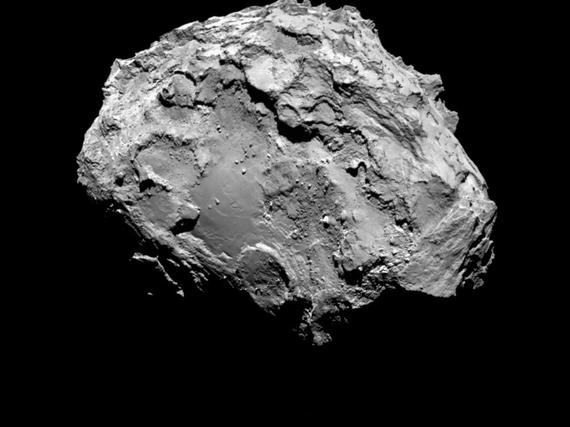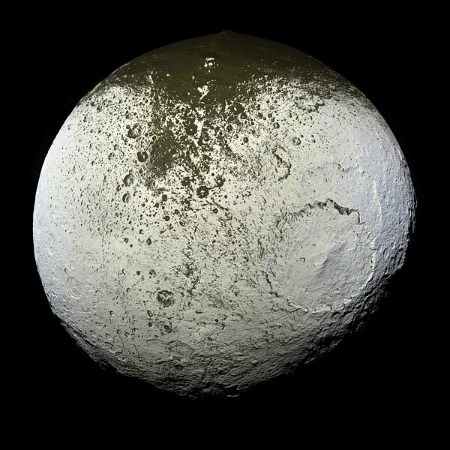If you are a planetary scientist, you are having one of your best years... ever!
You all remember the hoopla last October when the Philae lander was dropped from the Rosetta space craft and "docked" with Comet 67P/Churyumov-Gerasimenko. Before that we saw utterly amazing pictures of this comet revealing surface details and a landscape more bizarre than anyone could have imagined. Well, stay tuned for even better things to come, if that's possible!
A dwarf planet up close.
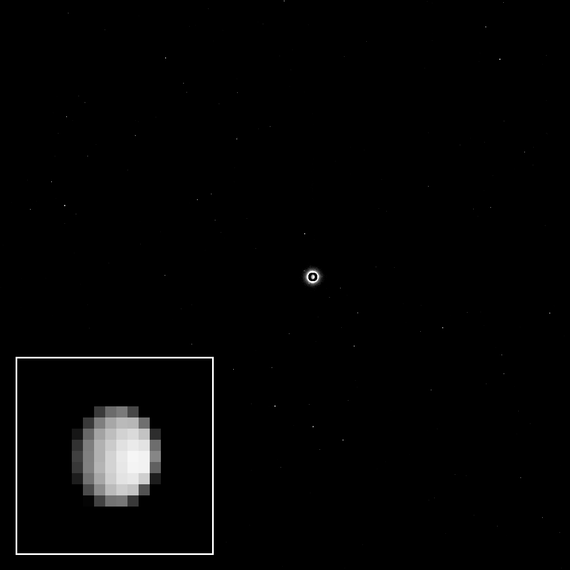
Ceres as seen by Dawn on December 1 (Credit: NASA/JPL)
Already the Dawn spacecraft has made its final approach to the dwarf planet Ceres. Formerly called the largest 'asteroid' in the known solar system, it was reclassified along with Pluto, Haumea, Makemake and Eris as a dwarf planet. Now only about 740,000 kilometers from Ceres, Dawn's cameras have matched the resolution of the Hubble Space Telescope in seeing surface details.... which is to say it hasn't seen anything yet because the entire disk of Ceres is only about 3 pixels wide! Since Ceres has a diameter of 590 miles, Dawn can't yet see anything smaller than about 200 miles across!
When it finally gets to Ceres in March, Dawn will begin its study at an orbit of 9,000 miles, and then by next November it will have stepped through ever-closer orbits until it gets to about 200 miles above the surface. Over this time it will capture thousands of images and assemble an atlas of the surface of Ceres with a final resolution of about 600 feet per pixel.
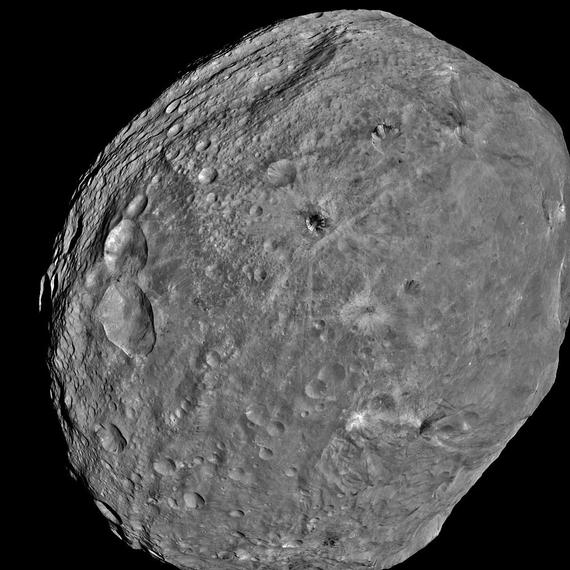
Asteroid Vesta from a distance of 2400 miles at about the same resolution as Ceres during mapping phase (Credit: NASA/Dawn)
Dwarf planet Ceres has a thin atmosphere with detectable water vapor, and it has been hypothesized that it is an icy body like its dwarf planet cousins found in the distant reaches of the solar system beyond Pluto. It would be the first time astronomers have been able to study such an unusual object up close. It may even have a liquid water ocean just below its icy crust! This would explain the source of the thin atmosphere, which has to be replenished by some process (geysers?) because the gravity of the body is too small to hang onto a warm atmosphere for very long.
Only a few features on the surface of Ceres have been detected. In 1995, the Hubble Space Telescope found a dark spot, which astronomers call Piazzi. It's probably a crater. The Keck telescope found several bright and dark features that followed the surface of Ceres as it rotated. One of these crater-like features has a bright central region, the other was identified as Piazzi. By 2004, the Hubble Space Telescope has found a total of 11 features. Dawn has its work cut out for itself to confirm these features and to add thousands more to the list.
Pluto's enigmatic surface.
While we are being entertained by the daily updates of images from Ceres, another 'First' will start to take place. Since its launch in 2006, the New Horizons spacecraft has traveled over 3 billion miles and is making its final course changes to fly by Pluto on July 14, 2015 at a speed of 30,000 miles per hour. The first glimpse of the disk of Pluto should start to arrive at Earth on January 15 after the radio waves complete their 4 hour journey. By mid-May the quality of the photos will start to exceed what the Hubble Space Telescope has provided so far (100 miles per pixel). After that, the resolution should reach a maximum of about 200 feet per pixel at its closest approach.
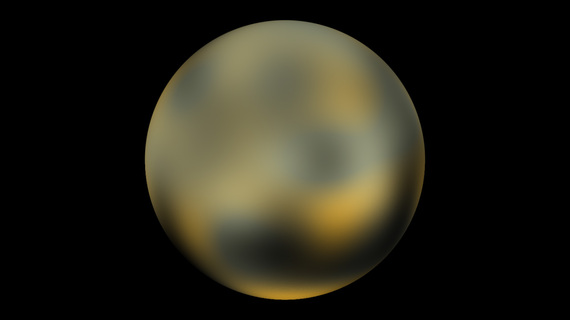
The surface of Pluto viewed by the Hubble Space Telescope at a resolution of about 100 miles per pixel (Credit:NASA, ESA, and M. Buie (SwRI))
What should we expect to see? Well, Pluto is known to be an icy object with possibly a reddish hue. If we look at Saturn's icy moon Iapetus (1200 feet per pixel) which has about the same diameter as Pluto it is a cratered landscape with broad surface features. The Hubble investigation of Pluto also shows that its surface has bright and dark areas, but unlike Iapetus, Pluto has a very thin atmosphere that condenses on its surface during its frigid winter, and then turns to gas during its summer. Right now, Pluto is moving past its closest approach to the sun in 1989 and it is still summertime, so the atmosphere is expected to be mostly in its gaseous state when New Horizons arrives. This makes it far easier to study the chemistry of the atmosphere than if it was frozen to the surface. What we know so far is that it is mostly carbon dioxide and methane, but there should be some nitrogen too (methane is a 4-nitrogen+1-carbon molecule).
But wait, there's more!
Beyond the drama of the images, the technology that makes them possible is also amazing. Dawn uses three 'Star Trek' ion thrusters to travel the solar system. With only 937 pounds of xenon, the thrusters create a steady stream of xenon atoms leaving the spacecraft, hour after hour and day after day. Over time the spacecraft speed can be increased or decreased by a total of 22,000 miles per hour over the course of the mission. Dawn's ion drive is capable of accelerating from 0 to 60 mph in 4 days, firing continuously!
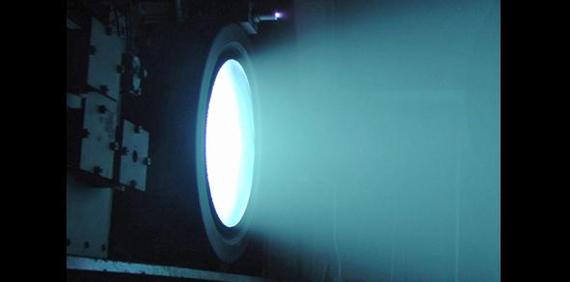
A 7-kilowatt ion propulsion engine (NEXT) successfully operated for more than 5 and a half years, at NASA's Glenn Research Center. (Credit: NASA)
On the other hand New Horizons uses a radio "dish" 7 feet in diameter, which transmits a 12-watt signal to Earth. To be detectable by NASA's Deep Space Network, it can only transmit images at about 1000 bits per second. It takes up to 8 hours to transmit every image that it takes near Pluto. To "buffer" this slow data transmission across the solar system, it stores images and data on an 8 gigabyte 'thumb drive'!
So, how could anyone NOT be excited by the exploration of our solar system! Who needs the distant stars... for now.
